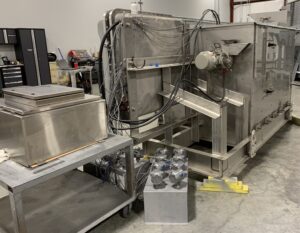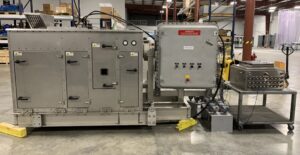Recently, a major Oil Company customer returned to Eldridge to replace a failing explosion proof desiccant dehumidifier that we had designed and supplied over 20 years ago. With our current desiccant dehumidifier manufacturing partner, Innovative Air Technologies (IAT), we provided a more robust and advanced unit while meeting the explosion proof requirements and customer specifications.
Operating Challenges
Inside offshore hull structures, the void tanks can experience condensation and are highly susceptible to corrosion. To prevent this, a humidity control system using either a special coating system, a desiccant dehumidifier or a combination of both is used to detect and prevent corrosion. Unfortunately, over time the same corrosion that the desiccant dehumidifier was trying to prevent, deteriorated its operating effectiveness and it needed to be replaced.
To prevent moisture from condensing on the inside hull surfaces, the customer had determined that humidity levels need to be controlled to maintain a dew point of 430F inside the void spaces. The new desiccant dehumidifier unit was equipped with a custom PLC to accept remote sensors that would monitor the humidity conditions and sound an alarm when the air in a void tank exceeded the maximum allowed humidity level. The unit was also outfitted with an HMI screen that displays each of the tank’s humidity level at all times. Additional alarm features were included for the maintenance of the desiccant dehumidifier unit as well. You can see the remote sensors in the bottom center of the picture below.

Explosion Proof Requirements
Building a desiccant dehumidifier to be explosion proof to Class I, Division II requirements is extremely challenging. Over the years, Eldridge has taken on the challenge and has provided several successful units to the offshore drilling and production industry. In this case, we delivered once again with the help of the experienced team from IAT.
The client also provided their own strictly enforced electrical specifications for their offshore production platforms. Additionally, Eldridge and IAT were able to integrate the existing hot oil system used as the heat source for drying the desiccant wheel element.

Conclusion
Thanks to the hard-working people from Eldridge, IAT, and the customer’s engineering firm, that spent hundreds of hours getting everything right for this project. Without their dedication to finding solutions to the most challenging issues it would have been impossible to meet the explosion proof standards and the specifications of the customer.
